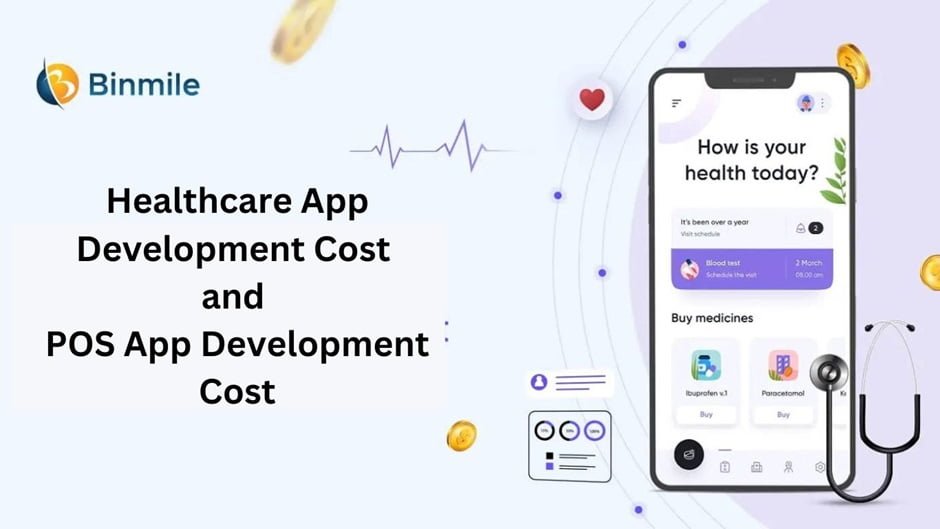Mobile and web applications are essential for businesses across various sectors. Understanding the costs involved in developing these applications is crucial for effective budgeting and strategic planning. This article will provide an in-depth look at the costs associated with developing healthcare apps and POS (Point of Sale) apps, two critical applications in the tech landscape.
Factors Influencing Healthcare App Development Cost
Complexity of Features
The more complex the features, the higher the cost. Basic healthcare apps with simple features like appointment scheduling and reminders will cost less than advanced apps with functionalities such as telemedicine, patient monitoring, and integration with wearable devices.
Compliance and Security Requirements
Healthcare apps must comply with regulations like HIPAA (Health Insurance Portability and Accountability Act) in the U.S. These compliance requirements necessitate additional security features and protocols, increasing development costs.
Integration with Existing Systems
Integrating a healthcare app with existing systems such as Electronic Health Records (EHR) and practice management software adds to the complexity and cost.
Design and User Experience
A user-friendly design that ensures a seamless experience for patients and healthcare providers is crucial. The more intuitive and aesthetically pleasing the design, the higher the development cost.
Average Cost Breakdown
Basic Healthcare Apps
Basic healthcare app development cost with essential features can range from $50,000 to $100,000.
Intermediate Healthcare Apps
Apps with more advanced features, such as EHR integration and patient management tools, typically cost between $100,000 and $200,000.
Advanced Healthcare Apps
High-end healthcare apps with comprehensive features, including AI-powered analytics and remote patient monitoring, can cost upwards of $200,000.
Case Studies and Real-World Examples
Successful Healthcare Apps and Their Costs
For example, a telemedicine app like Doctor on Demand reportedly required significant investment due to its comprehensive feature set and compliance requirements, costing around $200,000 to $300,000.
Factors Influencing POS App Development Cost
Feature Set and Functionalities
The number and complexity of features, such as inventory management, sales analytics, and customer loyalty programs, directly impact the cost.
Hardware Integration
Integrating the app with various hardware components like barcode scanners, receipt printers, and card readers adds to the development cost.
Customization and Scalability
The need for customization to fit specific business processes and scalability to handle growing transaction volumes can increase costs.
Security and Compliance
Ensuring that the app complies with payment industry standards like PCI DSS (Payment Card Industry Data Security Standard) is essential, which adds to the cost.
Average Cost Breakdown
Basic POS Apps
Basic POS app development cost with standard features may cost between $30,000 and $70,000.
Intermediate POS Apps
Intermediate apps with additional functionalities and some level of customization can range from $70,000 to $150,000.
Advanced POS Apps
Advanced POS systems with extensive features, high scalability, and robust security measures can cost upwards of $150,000.
Case Studies and Real-World Examples
Successful POS Apps and Their Costs
For instance, Square’s POS system, known for its extensive features and ease of use, likely required a substantial investment, potentially exceeding $150,000.
Comparative Analysis: Healthcare vs. POS App Development Cost
Similarities in Cost Factors
Both healthcare and POS app development share common cost factors such as feature complexity, security requirements, and the need for integration with other systems.
Differences in Cost Drivers
While healthcare apps require significant investment in compliance and patient data security, POS apps often focus more on hardware integration and payment processing security.
How to Optimize Development Costs
Choosing the Right Development Partner
Selecting a development partner with expertise in your specific app type can help streamline the development process and reduce costs.
Agile Development Practices
Using agile development methodologies allows for iterative improvements and adjustments, helping to manage costs effectively.
Cost-Effective Design and Development Strategies
Leveraging pre-built modules, focusing on essential features for the initial launch, and planning for scalable solutions can help keep costs in check.
Conclusion
Understanding the costs involved in developing healthcare and POS apps is crucial for effective budgeting and strategic planning. By considering the various factors influencing development costs and adopting cost-effective strategies, businesses can achieve their goals without overspending.
FAQs
1. What are the main factors affecting healthcare app development cost?
Key factors include the complexity of features, compliance and security requirements, integration with existing systems, and design considerations.
2. How much does it cost to develop a POS app?
The cost can range from $30,000 for basic apps to over $150,000 for advanced systems with extensive features and security measures.
3. Can I reduce app development costs by using off-the-shelf solutions?
Yes, using pre-built modules and focusing on essential features can help reduce costs while still delivering a functional app.
4. What are the typical security considerations for healthcare apps?
Healthcare apps must comply with regulations like HIPAA, requiring robust data encryption, secure authentication, and regular security audits.
5. How long does it take to develop a healthcare or POS app?
Development timelines can vary, but typically, it takes 6-12 months for a healthcare app and 4-8 months for a POS app, depending on the complexity.






